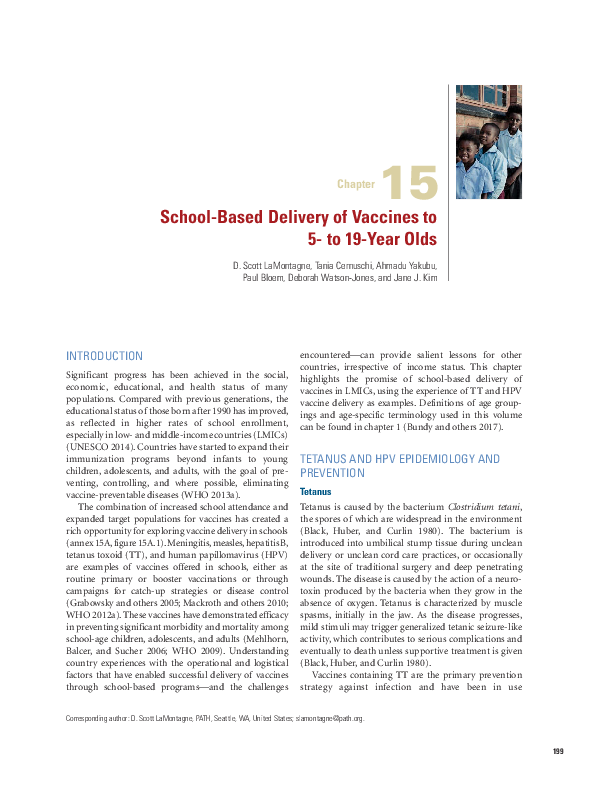
DCP Chapter 15: School-Based Delivery of Vaccines to 5- to 19- Year Olds
Publication year:
2017
English
Format:
pdf (3.6 MiB)
Publisher:
The World Bank Group
School-based delivery of vaccines remains a viable approach for the control of infections and diseases that cause significant morbidity and mortality. Increasing school enrollment and attendance by children and adolescents, particularly girls, has changed the landscape for health service delivery, providing an excellent opportunity to capture large proportions of populations eligible for vaccines, though to ensure equitable access for the most vulnerable populations, school-based delivery must be combined with strategies to reach those not attending school, such as mobile teams, outreach, and provision of vaccines at health facilities. Critical elements in the success and sustainability of any vaccine delivery program—especially those using schools—include (1) government ownership, endorsement, and financial support; (2) active and sustained involvement and leadership from ministries of health and education; and (3) broad-based community support from health workers, teachers, community leaders, civil society, parents, and adolescents. Delivery of vaccines presents an opportunity to regalvanize school health programs and build a stronger foundation for the delivery of other important health interventions.
>> Press here to return to the Disease Control Priorities (3rd Edition) Start Page
Read full abstract
Authors
View & Download
English
1 Documents
Document information
Publisher
Authors
Format
Rights
© Author/Publisher
Found a mistake? Help us improve!
If you have noticed a document assigned to the wrong author or any other inaccuracies, let us know! Your feedback helps us keep our data accurate and useful for everyone.
Share
Link
